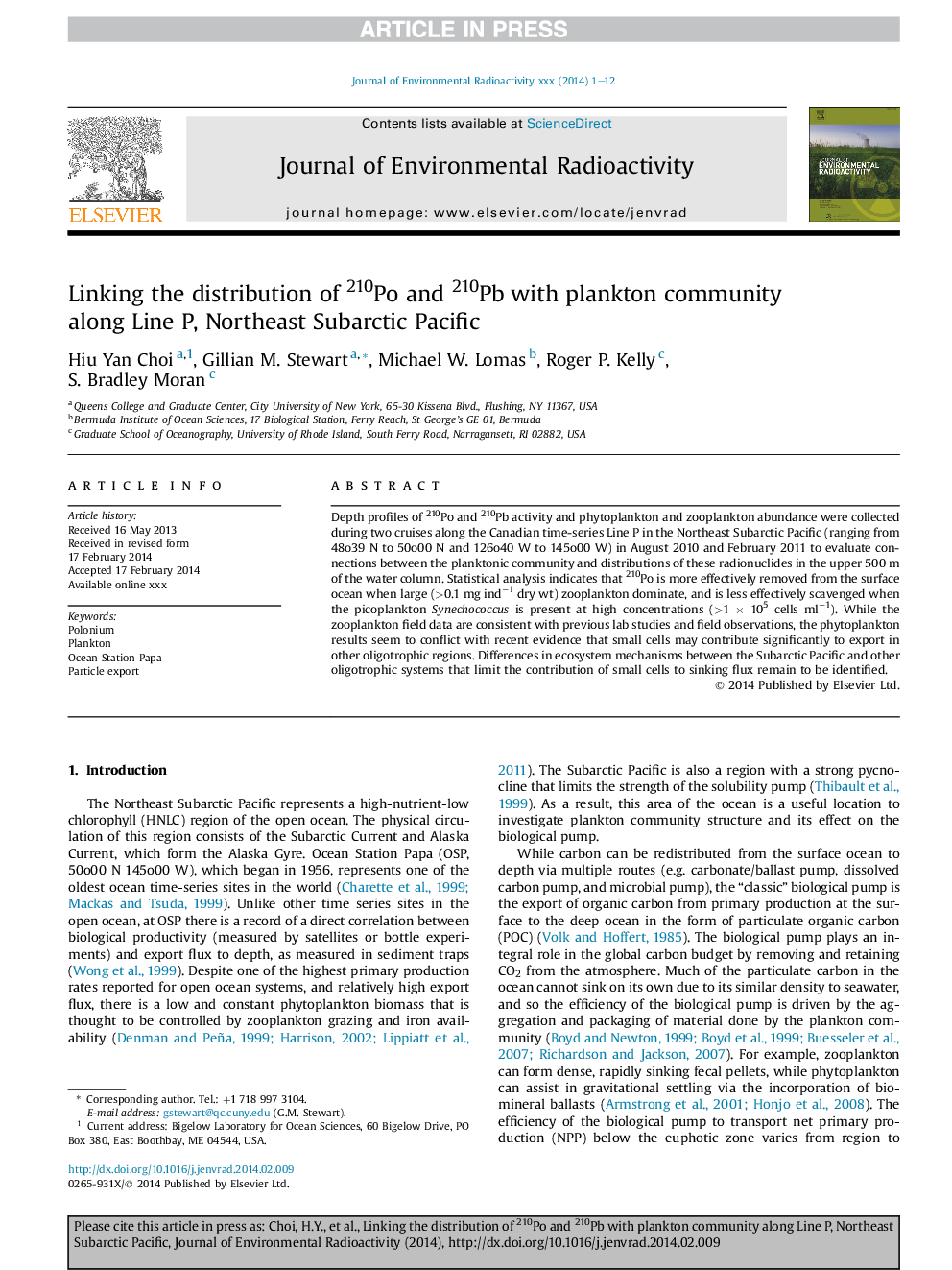| Article ID | Journal | Published Year | Pages | File Type |
|---|---|---|---|---|
| 8082869 | Journal of Environmental Radioactivity | 2014 | 12 Pages |
Abstract
Depth profiles of 210Po and 210Pb activity and phytoplankton and zooplankton abundance were collected during two cruises along the Canadian time-series Line P in the Northeast Subarctic Pacific (ranging from 48o39 N to 50o00 N and 126o40 W to 145o00 W) in August 2010 and February 2011 to evaluate connections between the planktonic community and distributions of these radionuclides in the upper 500 m of the water column. Statistical analysis indicates that 210Po is more effectively removed from the surface ocean when large (>0.1 mg indâ1 dry wt) zooplankton dominate, and is less effectively scavenged when the picoplankton Synechococcus is present at high concentrations (>1 Ã 105 cells mlâ1). While the zooplankton field data are consistent with previous lab studies and field observations, the phytoplankton results seem to conflict with recent evidence that small cells may contribute significantly to export in other oligotrophic regions. Differences in ecosystem mechanisms between the Subarctic Pacific and other oligotrophic systems that limit the contribution of small cells to sinking flux remain to be identified.
Related Topics
Physical Sciences and Engineering
Energy
Nuclear Energy and Engineering
Authors
Hiu Yan Choi, Gillian M. Stewart, Michael W. Lomas, Roger P. Kelly, S. Bradley Moran,
